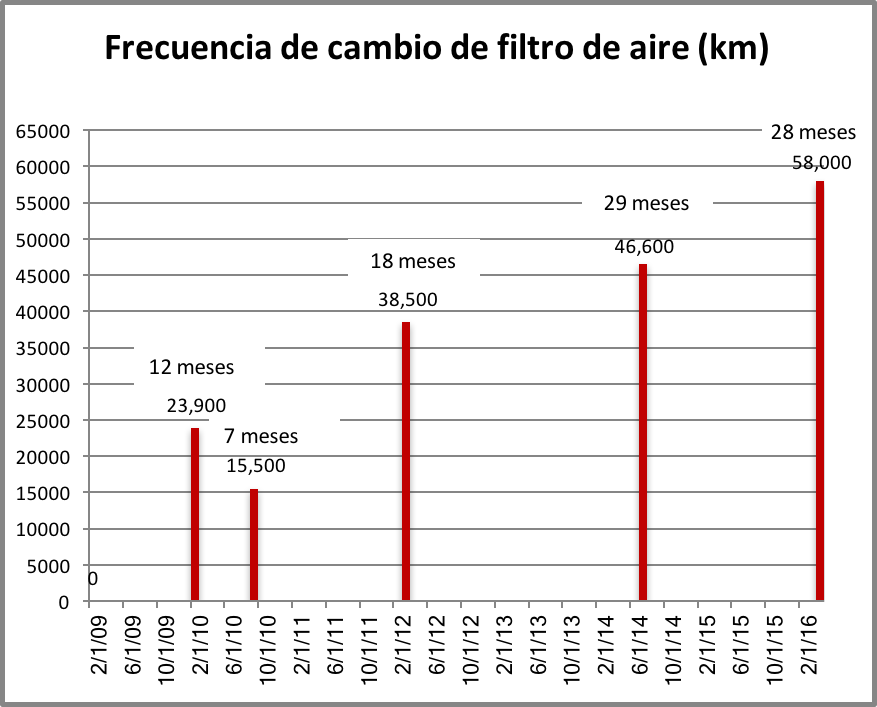I recently posted in a truck forum as an additional to an existing thread, harmlessly saying I installed a filter Minder for my 3.4L Toyota engine. The reasoning for doing so was because of the knowledge I gained from browsing this board and then looking at other sources.
This was immediately followed up with:
"Why did you do this? Filters are cheap, just change it at xx miles"
"Just change it at xx interval"
"Just change it when it looks dirty"
"Just tap it out and blow it out and put it back in"
"This is pointless when filters are cheap"
"How do you know this is even accurate?"
"How do you know this works on normal cars! These were designed for Diesels!"
Etc etc etc
To shut up the people who said "it won't work on passenger cars" I followed that up with a WOT run in 2nd gear with a new filter and it got a reading of h2o. I also said I would change if restriction got to 11-15in/h2o and not at the max. Because obviously the red restriction line WAS designed with diesels in mind.
Then we went around the merry go round of arguments all over again.
I had to kindly, and then as I lost my patience, not so kindly inform them that changing your air filter too early is dumb, if not dumber, for engine longevity as changing your filter too little. It had fallen upon deaf ears.
I told them to go do their own research. It's a $15 part, I'm not sure why everyone feels the need to [not] educate me with their personal opinions. I didn't even know that prematurely changing filters was a thing, until I was researching Napa ProSelect filters and the smart folks on this board were eloquently discussing premature filter replacement and the consequences, something I did not even know about until then. It seems as though the adage of "replace your filter earlier rather than later" has become a bit of an unfounded dogma amongst the automotive community. I fell for it too, right up until I didn't.
This was immediately followed up with:
"Why did you do this? Filters are cheap, just change it at xx miles"
"Just change it at xx interval"
"Just change it when it looks dirty"
"Just tap it out and blow it out and put it back in"
"This is pointless when filters are cheap"
"How do you know this is even accurate?"
"How do you know this works on normal cars! These were designed for Diesels!"
Etc etc etc
To shut up the people who said "it won't work on passenger cars" I followed that up with a WOT run in 2nd gear with a new filter and it got a reading of h2o. I also said I would change if restriction got to 11-15in/h2o and not at the max. Because obviously the red restriction line WAS designed with diesels in mind.
Then we went around the merry go round of arguments all over again.
I had to kindly, and then as I lost my patience, not so kindly inform them that changing your air filter too early is dumb, if not dumber, for engine longevity as changing your filter too little. It had fallen upon deaf ears.
I told them to go do their own research. It's a $15 part, I'm not sure why everyone feels the need to [not] educate me with their personal opinions. I didn't even know that prematurely changing filters was a thing, until I was researching Napa ProSelect filters and the smart folks on this board were eloquently discussing premature filter replacement and the consequences, something I did not even know about until then. It seems as though the adage of "replace your filter earlier rather than later" has become a bit of an unfounded dogma amongst the automotive community. I fell for it too, right up until I didn't.

